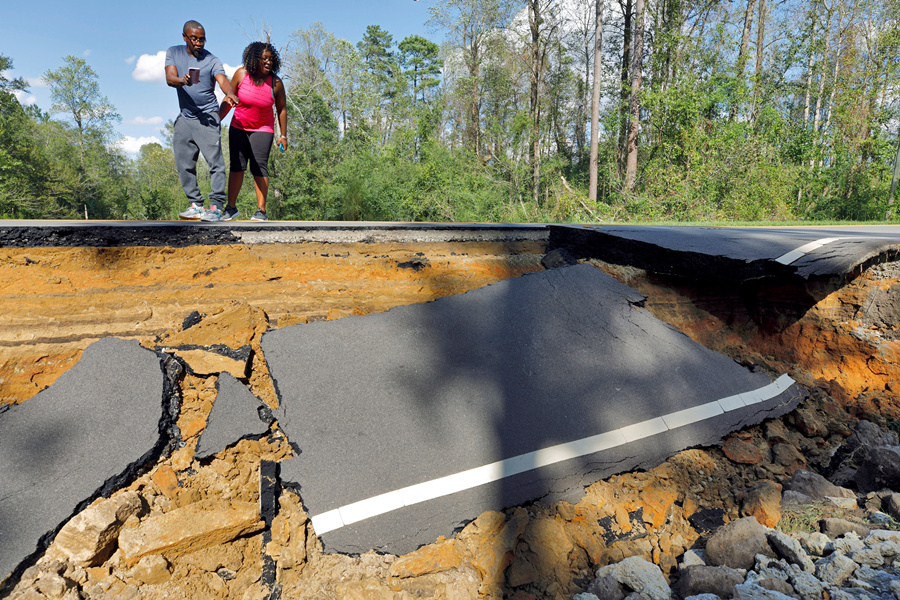Florence still delivering havoc, toxic water, snakes


Passersby look at a section of washed-out road damaged by flood waters in the aftermath of Hurricane Florence, now downgraded to a tropical depression, in Currie, North Carolina, US, September 18, 2018. [Photo/REUTERS]
About 1.7 million chickens have been killed in flooding from Florence as rising North Carolina rivers swamped at least 60 farm buildings where the animals were being raised for market, according to a major poultry producer.
Sanderson Farms said Tuesday the losses occurred at independent farms that supply its poultry processing plants. The company said its facilities suffered no major damage, but supply disruptions and flooded roadways had caused shutdowns at some plants.
In addition, about 30 farms near Lumberton have been isolated by flood waters, hampering the delivery of feed to animals. The lack of food could cause additional birds to die if access isn’t restored quickly, the company said.
The N.C. Pork Council says some hogs also may have died when farms flooded, but that mortality figures are not yet available. The pork industry trade group says farmers have been working before and after the storm to move at-risk animals to higher ground. The industry lost about 2,800 hogs during flooding from Hurricane Matthew in 2016.
The Department of Environmental Quality said the earthen dam at one hog lagoon in Duplin County had breached, spilling its contents. Another 25 of the pits containing animal feces and urine have either suffered structural damage, had wastewater levels go over their tops from heavy rains or had been swamped by floodwaters. Large mounds of manure are also typically stored at poultry farms.
Even though the sun shown in parts of the state Tuesday, major flooding is continuing after Florence’s passage and is expected to worsen in some areas. Sixteen North Carolina rivers were at major flood stage Tuesday with an additional three forecast to peak by Thursday.
An environmental threat is also posed by human waste as low-lying municipal sewage plants flood. On Sunday, the Cape Fear Public Utility Authority reported that more than 5 million gallons of partially treated sewage had spilled into the Cape Fear River after power failed at its treatment plant.
The Environmental Protection Agency said Monday that 16 community water treatment facilities in North Carolina are unable to supply drinking water and that seven publicly owned sewage treatment works are non-operational due to the flooding.
Aside from the risks of infectious diseases, electrocution, toxic chemical and metal hazards, floodwaters can also carry venomous snakes. Zoo officials in Myrtle Beach, South Carolina, warned that as many as 38 species of snakes could be flushed from their habitats by the storm and deposited in neighborhoods, among them copperheads and cottonmouths, both extremely highly dangerous.
AP

































